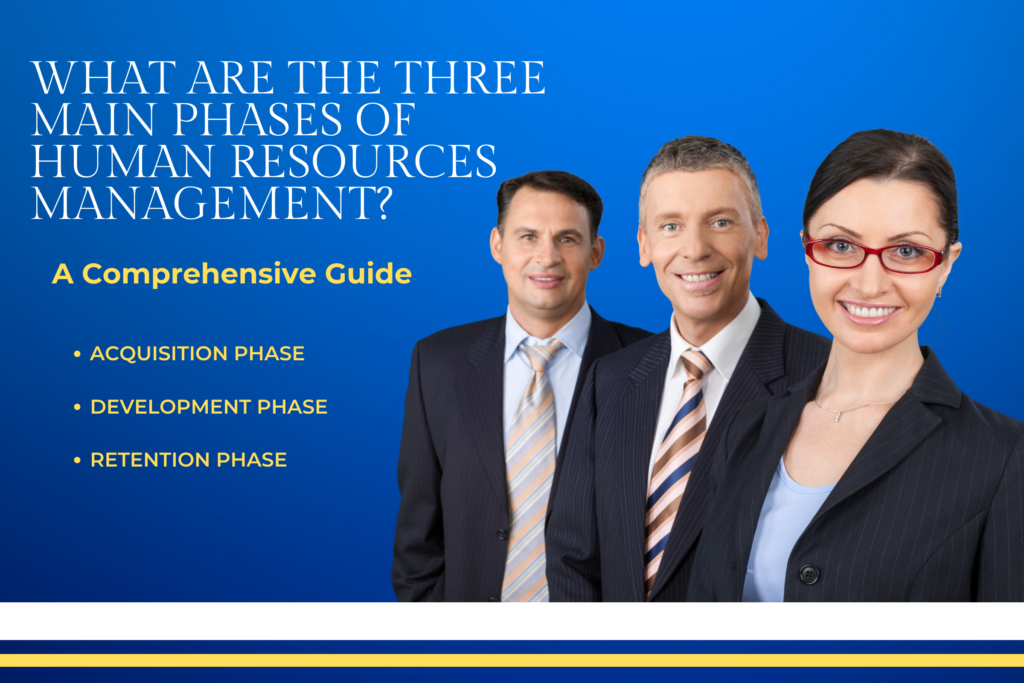
As the workforce becomes more diverse, organizations usually face the challenges of managing a multi-generational workforce. The generation gap refers to the differences in attitudes, values, and behaviors between different age groups. These differences can lead to misunderstandings, communication barriers, and conflict in the workplace. To effectively bridge the generation gap, it is important to understand the factors contributing to it. This comprehensive article will discuss the strategies for bridging the generation gap in the workplace. It will also discuss the impacts of the generational gap on productivity and collaboration in a workplace and common challenges in bridging the generation gap of an organization.
The Impact of the Generational Gap on Productivity and Collaboration
The generation gap can significantly impact the productivity and collaboration of a workplace. A lack of understanding and communication between different age groups can lead to miscommunication, decreased morale, and reduced productivity in an organization. For example, older employees may feel frustrated by younger colleagues who rely heavily on technology and may perceive them as needing more certain skills or work ethic. On the other hand, younger employees may feel undervalued or dismissed by older colleagues who may not fully appreciate their abilities and contributions.


Additionally, the generation gap may hinder collaboration and teamwork. Each generation brings unique strengths and perspectives to the table, and when these differences are not recognized and embraced, it can lead to conflict and a lack of synergy. Effective collaboration requires open-mindedness, respect for different viewpoints, and bridging differences in communication styles and work preferences.
Common Challenges in Bridging the Generation Gap
Bridging the generation gap in the workplace is challenging. Some of the common challenges include:
Overcoming Stereotypes and Biases – Each generation has its own set of stereotypes, and these stereotypes can lead to misunderstandings and unfair assumptions. For example, older employees may assume that younger employees are entitled or lack a strong work ethic. In comparison, younger employees may assume that older employees are resistant to change or technologically inept. Overcoming these stereotypes requires open and honest communication and a willingness to challenge and question our biases.
Finding Common Ground and Shared Values – While each generation has its unique values and priorities, commonalities can often be leveraged to bridge the gap. For example, all generations value respect, fairness, and a positive work environment. By focusing on these shared values, organizations can create a sense of unity and purpose that transcends generational differences.
Lack of Effective Communication – A lack of communication can hinder efforts to bridge the generation gap. Effective communication requires active listening, empathy, and adapting to different communication styles. Organizations should provide training and resources to help employees develop these skills and create opportunities for cross-generational collaboration and dialogue.
Strategies for Bridging the Generation Gap in the Workplace
You may follow different strategies to break the generation gap in the workplace. Some of the most valuable strategies include:
Effective Communication
Effective communication is key to bridging the generation gap in the workplace. Here are some strategies that organizations can implement to improve communication and understanding across generations:


Promote Open and Honest Communication – Encourage employees to speak up and share their perspectives, regardless of their age or position at the workplace. Create a safe space where all voices are heard and respected.
Facilitate Cross-Generational Mentoring – Pair employees from different generations to foster mutual learning and understanding. Arrange mentoring programs that can help bridge the gap by providing opportunities for younger employees to learn from the experience and wisdom of older employees and vice versa.
Encourage Active Listening – Develop training programs that focus on active listening skills. It can help employees better understand and appreciate different viewpoints and reduce misunderstandings and conflicts between employees.
Use Multiple Communication Channels – Recognize that different generations may prefer different communication channels. Provide various options, such as face-to-face meetings, email, instant messaging, and video conferencing, to accommodate different preferences.
Promote Empathy and Understanding – Encourage employees to put themselves in the shoes of others and consider different perspectives. It will help break down barriers and foster a culture of empathy and understanding.
By implementing these strategies, organizations can create a more inclusive and collaborative working environment that values the contributions of all generations of employees.
Fostering a Culture of Inclusivity and Respect
Organizations must foster a culture of inclusivity and respect to break barriers and bridge the generation gap in the workplace. It involves creating an environment where all employees feel valued, regardless of age, background, or position. Some of the ways that help organizations promote inclusivity and respect include:
Promote Diversity and Inclusion – Since employees of an organization are from different age groups, embrace generational diversity as part of a broader commitment to diversity and inclusion. Develop policies and practices that promote equal opportunities and fair treatment for all employees.
Recognize and Celebrate Differences – Create opportunities to recognize and celebrate the unique strengths and contributions of employees from different generations. It can help foster a sense of belonging and appreciation for each individual’s perspective.
Encourage Collaboration and Teamwork – Encourage a collaborative working environment where employees from different generations can work together towards common goals. Foster cross-generational teams and projects that leverage the strengths and expertise of each generation.
Address Ageism – Combat ageism by promoting awareness and understanding of age-related biases and stereotypes between employees. Provide training and resources to help employees recognize and challenge ageist attitudes and behaviors.
Lead by Example – Leaders always play a crucial role in creating a culture of inclusivity and respect. Set the tone by modeling inclusive behaviors, such as listening to different viewpoints, promoting open dialogue, and valuing diverse perspectives.
By encouraging such a culture of inclusivity and respect, organizations can create a working environment where employees from all generations feel valued, empowered, and motivated to contribute their best.
Implementing Mentorship Programs to Bridge the Generation Gap
A mentorship program is a structured and organized initiative facilitating pairing experienced individuals (mentors) with less experienced and younger ones (mentees). Such a program is aimed to provide guidance, support, and knowledge transfer.
Such programs can be an effective tool for bridging the generation gap in the workplace. These programs pair employees from different generations together, providing opportunities for mutual learning, support, and guidance. Here are some benefits of implementing mentorship programs:
Knowledge Transfer and Skill Development – Such programs have multiple benefits for the old and the younger generations. Younger employees can benefit from the experience and wisdom of older employees, while older employees can learn from the fresh perspectives and technological skills of younger employees. Mentorship programs provide a structured framework for knowledge transfer and skill development.
Enhanced Communication and Understanding – Mentorship programs facilitate open and honest communication between employees from different generations. Mentors can provide guidance and support, while mentees can ask questions and seek advice. It fosters mutual understanding and helps bridge the communication gap.
Increased Engagement and Retention – These programs can improve employee engagement and retention by creating a sense of belonging and connection. Employees who feel supported and valued are more likely to be satisfied with their work and stay with the organization.
Leadership Development – Mentorship programs allow younger employees to develop leadership skills and gain exposure to different leadership styles. Mentors can serve as role models and help mentees navigate their careers and develop their potential.
To implement a successful mentorship program, organizations should define clear objectives, establish guidelines and expectations, and provide resources and support for mentors and mentees. Regular check-ins and evaluations can help ensure the program’s effectiveness and make any necessary adjustments.
Training and Development Initiatives for Bridging the Generation Gap
Training and development initiatives can play a crucial role in bridging the generation gap in an organization’s workplace. Organizations can foster a more inclusive and collaborative working environment by providing employees with the skills and knowledge they need to navigate generational differences. Here are some training and development initiatives that can be implemented to bridge a generational gap:
Generational Awareness Training – Provide training programs that raise awareness about generational differences and their impact on the workplace. This can help employees better understand and appreciate different perspectives and reduce conflict and misunderstandings.
Communication Skills Training – Develop training programs focusing on improving communication skills, such as active listening, empathy, and adapting to different communication styles. These skills are essential for effective communication across generations.
Technology Training – Offer technology training programs to help older employees become more comfortable and proficient with new technologies. It can help bridge the technology gap and increase collaboration and productivity among the generations.
Leadership Development Programs – Develop leadership development programs that address the unique challenges and opportunities of managing a multi-generational workforce. These development programs can help leaders develop the skills and strategies they need to lead and engage employees from different generations effectively.
Continuous Learning Opportunities – Create a culture of continuous learning by providing opportunities for employees to expand their knowledge and skills. It can include online courses, workshops, conferences, and mentoring programs.
By investing in training and development initiatives, organizations can equip employees with the skills and knowledge to bridge the generation gap and thrive in a multi-generational workforce.
Embracing Technology to Bridge the Generational Gap
Technology can always be a powerful tool for bridging the generation gap in the workplace. Organizations can create a more inclusive and collaborative work environment by embracing and leveraging technology. Here are some key ways technology can be used to bridge the gap:
Collaboration Tools – Implement collaboration tools, such as project management software, instant messaging platforms, and video conferencing tools, to facilitate communication and collaboration across generations. These tools can help bridge geographical barriers and enable real-time collaboration.
Knowledge Sharing Platforms – Create knowledge-sharing platforms, such as intranets or online communities, where employees from different generations can share information, best practices, and lessons learned. It can help facilitate knowledge transfer and foster a culture of continuous learning.
Training and Development Resources – Use technology to deliver training and development resources, such as online courses, webinars, and e-learning platforms. It allows employees to access learning materials at their own pace and convenience, regardless of location or schedule.
Employee Feedback and Engagement Tools – Implement employee feedback and engagement tools, such as pulse surveys or social recognition platforms, to gather feedback and foster employee engagement. These tools can help bridge the communication gap and provide a platform for employees to voice their opinions and concerns.
Virtual Collaboration Spaces – Create virtual collaboration spaces, such as online forums or social networking platforms, where employees from different generations can connect, share ideas, and collaborate on projects. These spaces can help break down barriers and foster cross-generational collaboration.
By embracing technology, organizations can create a more connected and inclusive work environment that leverages the strengths and expertise of employees from all generations.
Final Thoughts
In the multi-generational workforce of the modern era, organizations must embrace generational diversity and bridge the generation gap to foster collaboration, productivity, and innovation. Organizations can develop strategies to effectively communicate and collaborate across generations by understanding the factors that contribute to the generation gap. It includes promoting open and honest communication, fostering a culture of inclusivity and respect, implementing mentorship programs, providing training and development initiatives, embracing technology, and learning from successful case studies.
By embracing generational diversity, organizations can leverage each generation’s unique strengths and perspectives, creating a work environment that values and empowers employees from all walks of life. Organizations can build bridges of understanding, collaboration, and success by breaking the barriers that divide generations.
FAQ: Strategies for Bridging the Generation Gap in the Workplace
Q.1. What exactly is the “generation gap” in the workplace, and why is it significant?
The generation gap refers to differences in attitudes, beliefs, and behaviors between individuals of different age groups within the workplace. These differences can arise from varying life experiences, technological advancements, cultural shifts, and societal changes. Recognizing and addressing the generation gap is crucial because it can impact communication, collaboration, productivity, and overall workplace cohesion. Failure to bridge this gap effectively may lead to conflicts, misunderstandings, and hindered organizational performance.
Q.2. What are some common characteristics of different generations in the workplace?
Each generation, such as Baby Boomers, Generation X, Millennials, and Generation Z, possesses unique characteristics shaped by the historical context and societal influences during their formative years. For instance, Baby Boomers often value loyalty, stability, and face-to-face communication, while Millennials and Generation Z tend to prioritize work-life balance, technological proficiency, and flexibility. Understanding these generational traits can help foster empathy and facilitate better cross-generational collaboration.
Q.3. How can organizations foster cross-generational understanding and collaboration?
Organizations can implement various strategies to bridge the generation gap effectively. These may include mentorship programs pairing older and younger employees to facilitate knowledge transfer, reverse mentoring initiatives where younger employees share their technological expertise with senior counterparts, and diversity training programs that promote respect for different perspectives and experiences. Additionally, creating a culture of inclusivity and open communication can encourage employees of all ages to share their ideas and learn from one another.
Q.4. How can communication strategies be tailored to address generational differences?
Effective communication is key to overcoming generational barriers in the workplace. Employers can adopt diverse communication channels such as face-to-face meetings, emails, instant messaging platforms, and video conferences to accommodate varying preferences among different age groups. It’s also essential to recognize and respect communication styles prevalent within each generation. For example, while older employees may prefer formal communication, younger workers might prefer more informal and digital methods.
Q.5. How can organizations adapt their leadership styles to accommodate different generations?
Leadership approaches should be flexible and adaptive to cater to the diverse needs and preferences of employees across generations. Leaders can adopt a situational leadership approach, adjusting their management style based on the specific circumstances and individuals involved. This might involve providing clear direction and structure for employees who prefer guidance while empowering those who value autonomy and flexibility. Additionally, leaders should be open to feedback and willing to learn from employees of all ages to foster a culture of continuous improvement.
Q.6. What role does technology play in bridging the generation gap?
Technology can serve as both a barrier and a bridge in inter-generational communication and collaboration. While younger generations often embrace new technologies seamlessly, older employees may face challenges adapting to rapid technological advancements. Organizations can bridge this gap by providing comprehensive training programs and support to enhance digital literacy among older employees. Additionally, leveraging technology to facilitate knowledge sharing, virtual collaboration, and flexible work arrangements can help bridge generational divides and promote a more inclusive workplace culture.
Q.7. How can organizations address stereotypes and biases associated with different generations?
Combatting stereotypes and biases requires proactive efforts to promote awareness, empathy, and mutual respect among employees. Organizations can implement diversity and inclusion training programs that challenge stereotypes and highlight the value of diverse perspectives. Encouraging intergenerational mentorship and collaboration opportunities can also help break down barriers and foster positive relationships based on merit and expertise rather than age-related assumptions.
Q.8. What role do flexible work arrangements play in bridging the generation gap?
Flexible work arrangements, such as telecommuting, flexible hours, and remote work options, can accommodate the diverse needs and preferences of employees across different generations. While younger workers may prioritize work-life balance and flexibility, older employees may appreciate the opportunity to transition into retirement gradually or accommodate caregiving responsibilities. By offering flexible work arrangements, organizations can attract and retain talent from diverse age groups while promoting inclusivity and employee well-being.
Q.9. How can organizations leverage the strengths of different generations to drive innovation and creativity?
Each generation brings unique perspectives, skills, and experiences to the table, which can be harnessed to foster innovation and creativity within organizations. Employers can encourage cross-generational collaboration by creating diverse teams that leverage the complementary strengths of individuals from different age groups. By fostering an environment where ideas are valued regardless of their source, organizations can tap into the collective wisdom and creativity of their workforce to drive innovation and achieve strategic objectives.
Q.10. What are some potential challenges in implementing strategies to bridge the generation gap, and how can they be overcome?
Implementing strategies to bridge the generation gap may encounter challenges such as resistance to change, entrenched cultural norms, and communication barriers. To overcome these challenges, organizations must foster a culture of openness, flexibility, and continuous learning. This might involve soliciting feedback from employees at all levels, providing resources and support for skill development, and demonstrating leadership commitment to diversity and inclusion initiatives. By prioritizing collaboration and mutual respect, organizations can effectively navigate generational differences and harness the full potential of their multigenerational workforce.

